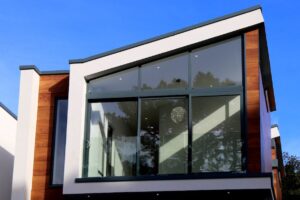Sustainable Building Design: Top Tips To Improve The Energy Efficiency Of Your Home

Sustainability is becoming increasingly important for people all over the world. As a result, homeowners are looking for ways to live more sustainable lifestyles. This refers to not only choosing sustainable brands, but also investing in sustainable building design and improving the energy efficiency of their homes. However, if you don’t have much experience with sustainable construction, it can be hard to know where to begin. Whether you are building a new home from scratch or renovating an existing one, there are some things you can do to make your home more environmentally-friendly. Today we share a few tips on using sustainable building design to improve energy efficiency.
Use Green Materials
Firstly, you can reduce the environmental impact that traditional construction materials have by replacing them with green materials. Traditional materials use a lot more energy and resources during production when compared to other more environmentally-friendly options. Therefore, it’s worth learning more about green materials, such as bamboo, reclaimed wood, straw bales, recycled steel, and more. If you are unable to find recyclable materials, be sure to look for locally-sourced building materials. This will help you save energy, which in turn will lead to a direct reduction in carbon emissions.
Ensure Good Ventilation
Proper ventilation is a key part of sustainable homes, as it can help to prevent the build-up of stale air and elevated levels of moisture, which often lead to condensation. This means that it might be a good idea to look for sustainable approaches to residential ventilation solutions. To find out more about residential ventilation systems, there are many examples to explore, such as the UN17 Village, which is currently under construction in Copenhagen. The team at the Dantherm Group has been leading the change for years with the aim of introducing mechanical ventilation, which offers optimised living conditions and keeps energy consumption at a minimum.
Design An Environmentally-Conscious Layout
Another key detail you should focus on is designing an environmentally-conscious layout from the start. This will make decisions about sustainability much easier in the next stages of development. For example, when it comes to location, it’s advisable to choose an area, which has access to public transportation. Ensure that the biggest surface areas of the building face east or west, which will help you keep internal temperatures stable and achieve an optimal design. In addition, remember that taller homes are typically more energy-efficient than wider ones, so you may want to consider building upward.
Maximise Natural Light
It’s also important to reduce the amount of artificial lighting that you need in your home, which means that you will need to focus on maximising natural light. This can be done through the good use of windows, sun pipes, and roof lights. Consider using energy-efficient doors and windows, which can help you improve your home’s overall thermal performance. For example, you can opt for taller windows, which are designed to allow light to penetrate deeper into a building. Avoid choosing furnishings which may block natural light, such as thick blinds and curtains.



































No comments